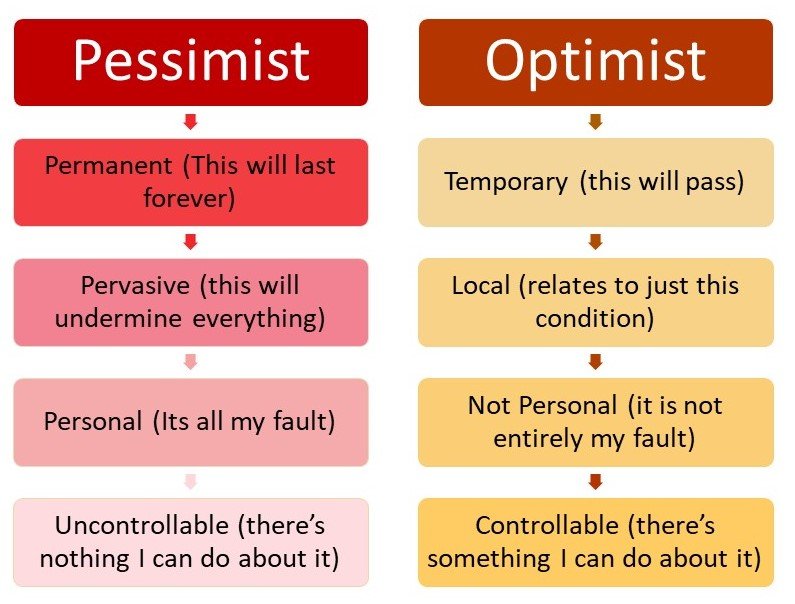

Dispositional optimism is positively related to many different areas of life, such as life satisfaction, health, employment status, and self-esteem (e.g., Hajek & König, 2019).
#Optimism vs pessimism full#
Whereas optimists look to the future with confidence and mostly expect good things to happen, pessimists are full of doubt when they look to the future and mostly expect bad things to happen.

Optimists and pessimists differ in their approach to the world (e.g., Carver et al., 2010). It can be applied in a variety of research disciplines, such as psychology, sociology, or economics. As an ultra-short scale with a completion time of < 20 s, SOP2 lends itself particularly to the assessment of dispositional optimism in survey contexts in which assessment time or questionnaire space are limited.

Moreover, scalar measurement invariance of the scale holds when comparing the UK and Germany, implying the comparability of latent (co)variances and latent means across the two nations. Our results show that the English-language adaptation has satisfactory reliability coefficients and is correlated with 10 external variables in the study (e.g., self-esteem, Emotional Stability, life satisfaction). Because an empirical validation of this English-language SOP2 was hitherto lacking, the aim of the present study was to assess the psychometric properties (objectivity, reliability, validity) of the English-language adaptation and to investigate measurement invariance across both language versions using heterogeneous quota samples from the UK and Germany. SOP2 is the English-language adaptation of an originally for the German language developed scale. The Optimism–Pessimism Short Scale–2 (SOP2) described in this article measures the psychological disposition of optimism with two items.


 0 kommentar(er)
0 kommentar(er)
